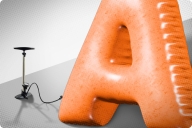You have /5 articles left.
Sign up for a free account or log in.
At one point during class Minerva San Juan stopped short. A student in the front row had successfully volunteered the link -- and leap -- between an assumption in an article and an inference drawn from it, and the professor wanted a second to savor, even celebrate, the occasion.
“That moment of abstraction is what they’re not used to doing in high school at all,” San Juan explains after class, Philosophy 103: Reasoning and Argumentation, in a hallway of the old, stately Main Hall at Trinity College, in Washington, D.C. The building dates to the college’s opening in 1900 and its heritage through much of the 20th century as an elite Catholic women’s college, a sister to Georgetown University across town. Under pressure to change after suffering intense enrollment declines in the 1970s and '80s wrought (in part) by expanded coeducation, today Trinity is an institution transformed, with its largest freshman class this fall since 1967 -- and a very different class at that. Nearly half its students are D.C. residents, more than 85 percent are black and Hispanic, and 62 percent receive federal Pell Grants (a proxy for low-income status).
“Trinity has gone through this radical and exciting transformation and while I think our faculty have done an amazing job of developing pedagogies to reach out and be successful with this new student body, the curriculum hadn’t kept pace,” says Elizabeth Child, dean of Trinity’s College of Arts and Sciences. This fall, the 631-student women's undergraduate college introduced a revamped general education curriculum, built on the bedrock of first-year classes emphasizing “foundational skills” -- critical reading, written communication, oral communication, critical reasoning, and quantitative reasoning.
“I think it would be fair to say that the driving impetus behind our discussions and the way that we crafted this curriculum was that, for the student body that we serve, the student demographic that we serve, there are a lot of discussions about their deficiencies,” Child says. So-called urban learners “tend to come from big urban public high schools where they’ve been educated in chaotic and unsatisfactory ways. They have lots of educational deficiencies. They know that; there’s a lot of press about that, about the Washington, D.C. high school systems."
“What we wanted to do was craft a curriculum that speaks to and takes advantage of the amazing assets of these students. In particular, we wanted to recognize the resilience of our students and the persistence of our students, the kind of survival skills that they have learned in order to get to the point that they would even aspire to go to college” -- while, at the same time, Child says, recognizing that many students come in unprepared for college-level work in some subjects.
“There were things which were implicit in the old curriculum which now we have simply made explicit. Instead of expecting our students to infer how you read critical theory by simply giving them examples and saying ‘Read this, and come in and talk about this,’ we’re now much more explicit. ‘Here’s the reading that you’re going to need to be able to do. Here are some strategies for doing that reading successfully,' " says Child.
The new curriculum requires students to take classes in each of the five foundational areas, with an emphasis on delivering skills instruction through the disciplines. On a recent Wednesday in San Juan’s philosophy class -- which fulfills the critical reasoning requirement -- San Juan, an associate professor, led students through an analysis of Baruch Brody’s article on "Fetal Humanity and Brain Function," beginning with the article’s purpose, the assumptions (and inferences!), information presented, etc., and ending with a set of questions about “How convincing is the article?”
“In [most other] classes, you read an article, you have to say what it's about, but you don’t go into what is an argument,” says Ana Schwartz, a freshman from the Maryland suburbs.
“Is it accurate, is it biased, in one way or another -- the questions you should be asking but I don’t think we ever thought about it in a formulaic way,” adds Morgan Kellman, also a freshman from Maryland.
“You can use the formula basically for everything that you read," says Schwartz. "If I hadn't had this class, I probably would have been having a harder time."
The ‘Urban Learner’
As students deconstruct and reconstruct articles and their arguments, faculty members at Trinity are doing the same for the term "urban learner," typically used in K-12 settings -- evaluating the term's usefulness for college students, looking for biases and ultimately reframing it as a starting point for many of the conversations surrounding the new general education curriculum.
“We find the term a little limiting, quite frankly, but in the absence of anything else, we’re using it as a springboard to craft a new agenda for higher ed,” says Diane Forbes-Berthoud, the communication department chair. She and Carlota Ocampo, an associate professor of psychology and associate dean for the first-year experience at Trinity, are co-presenting a paper on their research of urban learners at the Caribbean Studies Association Conference in Colombia in May.
In their surveys of what faculty think about the term, “The responses are mixed,” Forbes-Berthoud says. “Some people concur with the current definitions, which are persons who are at-risk, low-income.... Others have found it to be very limiting; some went so far to say racist. Some thought there was little difference between Trinity students and others.”
"In many ways, we're challenging this discourse."
Data-Driven
An emphasis on developing the tools to build upon and challenge the dominant discourse is at the foundation of the new Trinity curriculum. “It’s important that you look for inferences that do not seem to be well-founded in data,” Saundra Oyewole, a professor of biology, tells students during her class on Critical Thinking About Disease. Between calculating body mass indexes (with one student ending up quite surprised and a bit disturbed to find out that using the index, her mother would be obese), Oyewole discusses the need to rigorously evaluate data and how it’s presented, to examine the scale used on any graph, and to consider the sample size.
Data on the success of Trinity’s curricular changes are only preliminary at this point. But faculty and administrators said they were pleased with what they describe as promising early results in critical reading and math -- which, also new this fall, are taught at the lowest levels by specialists who offer extra lab sessions. Child, the dean of the college, cites data showing that among students who placed into the developmental math track this fall, those who completed the course with a C- or better scored an average of 17.1 on the post-test -- significant because 17 is the benchmark for placement into college-level math. (Pass rates in two developmental math courses were 65 and 45 percent, respectively.)
And, in reading, where half the 45 students placed in a developmental course passed and half didn’t, about 90 percent showed gains on their post-test scores, and half of those students improved their scores by more than 50 percent, Child says.
In terms of other support services, the Academic Services Center has moved from a somewhat "tucked away" corner of Main Hall's third floor known, tellingly, as “the maze,” to an airy, open space in the library where stacks of periodicals used to live. Staff report increases in foot traffic -- with use of the Writing Center up 200 to 300 percent this year.
The university is also in the midst of evaluating the cost of the curricular changes through a Lumina Foundation-funded project. “On a national level,” says Cristina Parsons, an associate professor of economics and formerly an associate dean, “the conversation regarding better access for all students has really revolved around the explicit cost to the student of an education” ($18,250 in tuition at Trinity this year, with an average discount rate of 40 percent). “We want to have more universal access to higher education, so we’ve pretty much focused on how to best fund that education for students with modest means. But the other side of that question is these programs are staggeringly expensive to deliver.”
At the same time, faculty describe the new curriculum as just the most recent, and logical, step in the institution’s evolution. "A lot of this is not rocket science. It's just that we never did it before," says Ocampo, the associate dean for the first-year experience.
“What the founder of this place said,” San Juan added, “is ‘teach them what they need to know.’ ”








